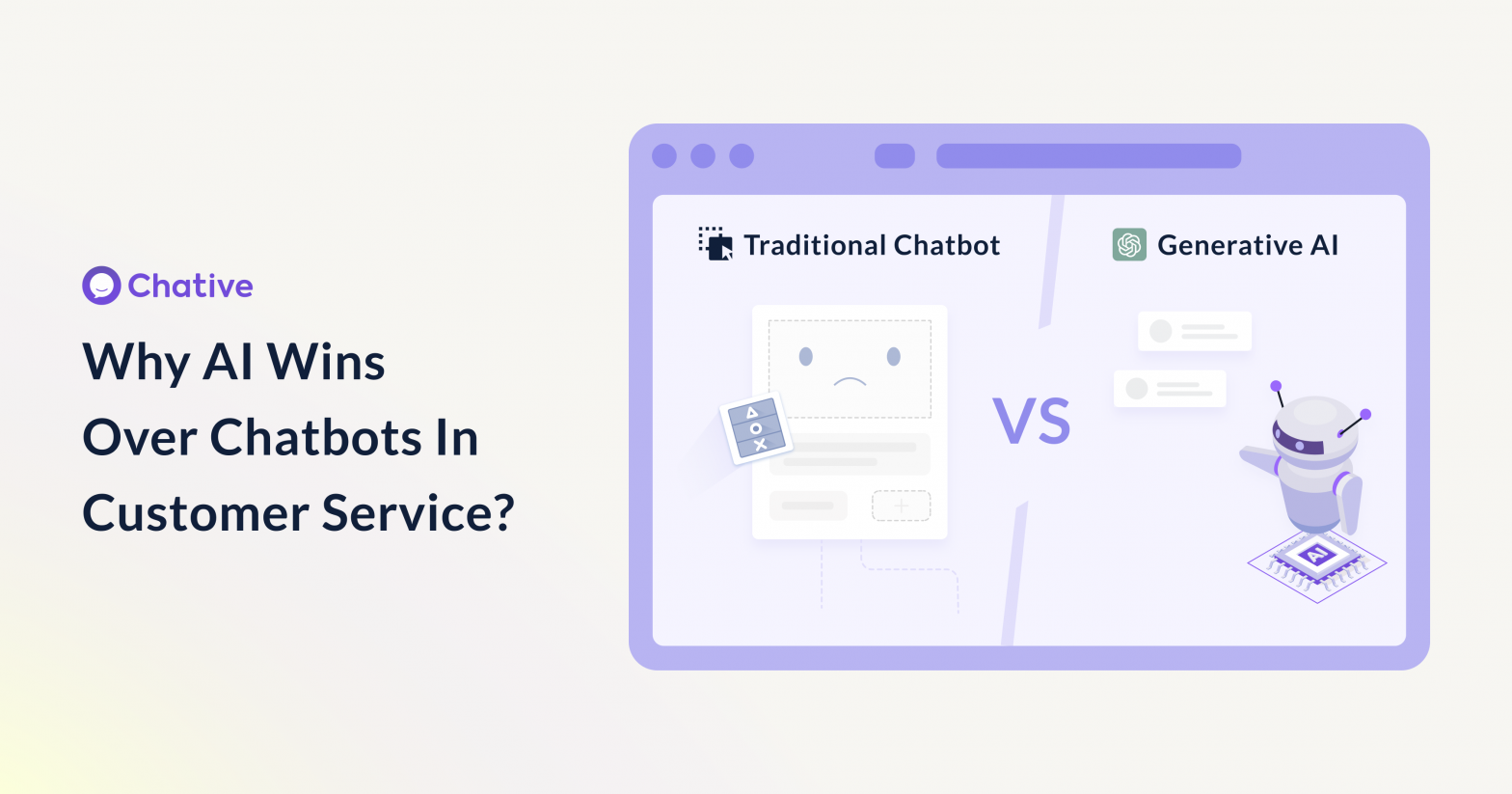You’re running an e-commerce business, trying to figure out the best ways to engage your customers, grow your brand, and increase customer satisfaction. However, with so many players in the e-commerce space competing for customer attention, staying competitive can be challenging. How you can stay ahead of the game in today’s ever-evolving e-commerce landscape and capitalize on the latest trends in the market?
As competitors utilize some outstanding automation solutions to expedite orders, enhance efficiency, and optimize resources, embracing tech isn’t just an option anymore, it’s a must.
You’d definitely have come across some Chatbot or Generative AI concepts as “the new hype in the customer service industry”. While traditional chatbots have had their moment in the spotlight, Generative AI represents a significant leap forward in enhancing customer experiences, especially in the e-commerce sector. It’s not just a matter of a new trend; it’s a game-changer that can redefine how businesses interact with their customers.
So, what sets Generative AI apart from its predecessor, the traditional chatbot? For those who may be unfamiliar with these concepts or are currently relying on traditional chatbots, this blog is a must-read. Let’s explore the key distinctions that make Generative AI the superior choice for businesses looking to thrive in the competitive world of e-commerce.
Generative AI Is Still New, But It’s Already Making A Big Impact
Generative AI represents a new and transformative trend in the technological landscape. With the emergence of advanced AI like ChatGPT, BARD, and others, we are witnessing a wave of innovation that is reshaping industries across the board. These developments are not just incremental improvements but rather groundbreaking advancements that have the potential to revolutionize the way businesses operate.

One remarkable aspect of this trend is the substantial investments being poured into AI projects. Tech giants, startups, and venture capitalists alike are recognizing the enormous potential of generative AI and are allocating significant resources to its development.
On an individual level, people are already experiencing the benefits of AI in their daily lives. They are using AI-powered tools for tasks such as content creation, data analysis, and even personal virtual assistants. However, the question arises: Can AI assist businesses in the same transformative manner it assists individuals?
The answer is a resounding YES. One industry that’s poised for significant transformation is the e-commerce sector. The potential of generative AI in the e-commerce industry is revolutionary. With the ability to understand and anticipate customer needs, Generative AI like ChatGPT can enhance the entire online shopping experience.
How Can Generative AI Help Your E-commerce Business Scale?
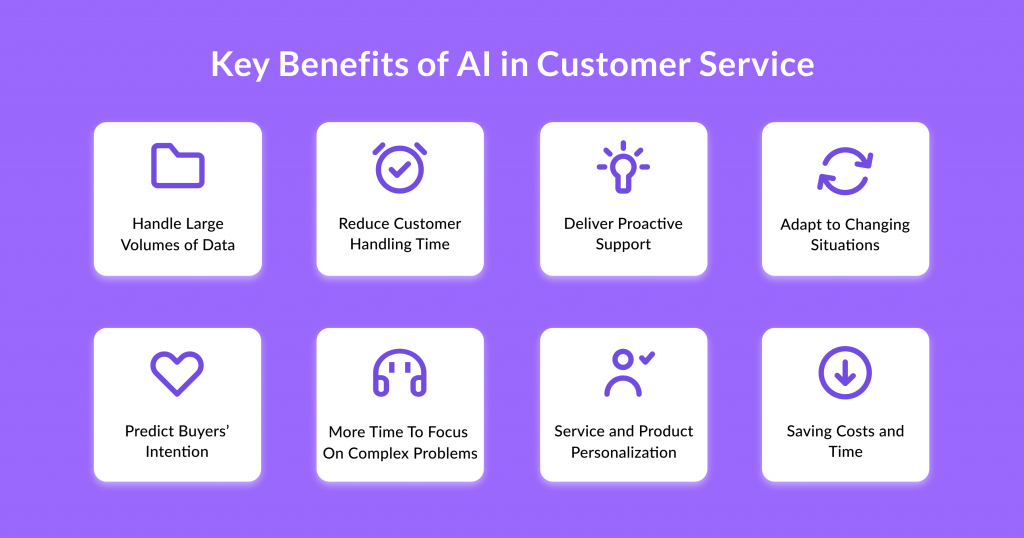
Customer Support Efficiency
Managing customer inquiries and providing efficient support can be resource-intensive and time-consuming, especially during peak periods. Human agents may struggle to handle the volume of queries effectively.
One of the most compelling applications of generative AI in e-commerce is in customer support and engagement. Generative AI powered by this technology can provide 24/7 assistance, addressing common customer queries, tracking orders, and processing returns efficiently. This not only improves customer satisfaction by offering immediate assistance but also reduces the workload on customer support teams, allowing them to concentrate on resolving more intricate issues and providing personalized service.
Personalized Shopping Experience
E-commerce businesses aim to provide a personalized shopping experience to customers, but achieving this at scale can be challenging.
But now we have an AI Assistant that can help us create personalized content, products, and services based on user preferences and behaviors. Imagine a world where online shoppers no longer need to sift through endless product listings to find what they want. Generative AI can create personalized shopping assistants that engage customers in natural conversations, helping them discover products that perfectly align with their preferences and needs. These virtual shopping assistants can provide real-time product recommendations, answer questions, and even assist in completing transactions, all while offering a seamless and enjoyable shopping journey.
Cart Abandonment Reduction
A major pain point revolves around the persistent challenge for e-commerce online shops is cart abandonment. This issue translates to substantial revenue loss for businesses as customers frequently abandon their shopping carts due to a variety of reasons, including unanswered questions, uncertainties, or distractions that deter them from completing their purchases.
An AI Assistant can engage with customers in real time when they are on the checkout page, addressing their concerns, providing product information, and offering assistance with the purchase process. It can use personalized recommendations and incentives to encourage customers to complete their transactions, effectively reducing cart abandonment rates and bolstering sales revenue for e-commerce businesses.
The Impact Of Generative AI On Consumer Perspectives And Trust
Users’ attitudes toward Generative AI are evolving as this technology becomes increasingly prevalent, especially in the world of e-commerce. With its growing influence, there are legitimate concerns and questions being raised regarding its impact on authenticity, trust, and the overall consumer experience.
In various sectors, including banking, government, and especially e-commerce,… According to MIT Technology statistic, businesses are integrating Generative AI into their operations to improve efficiency and customer interactions. While this brings advantages such as enhanced personalization and automation, it also gives rise to questions about data privacy, the potential for AI biases, and the need for transparency in AI-driven decision-making
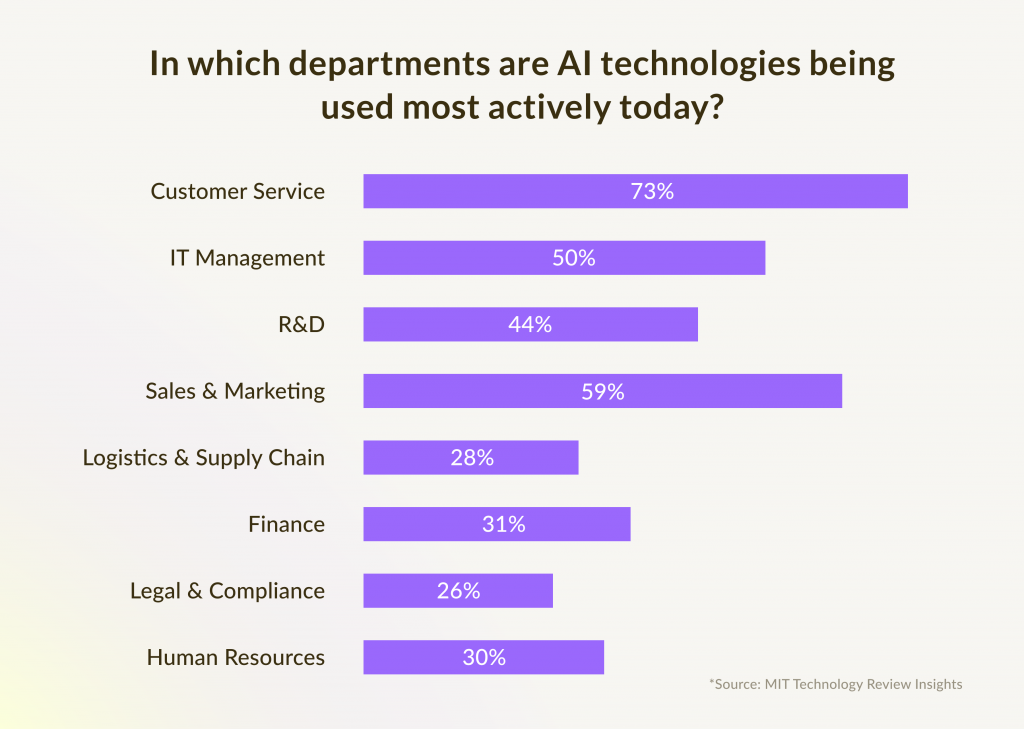
Statistics reveal that consumers are increasingly aware of AI’s role in their daily lives. They seek assurances that AI applications are used ethically and transparently. As Generative AI continues to evolve and demonstrate its potential benefits, businesses must actively engage with their customers, educate them on how AI is being employed, and address concerns to build trust and ensure a positive user experience. Balancing the advantages of AI with ethical considerations will be pivotal in shaping users’ attitudes toward this transformative technology.
As mentioned above, Generative AI is the most effective automation tool used in customer service, and 84% believe it improves the customer experience. When it comes to personalization, 46% say it offers a more personalized experience. (Source: Hubspot’s study)
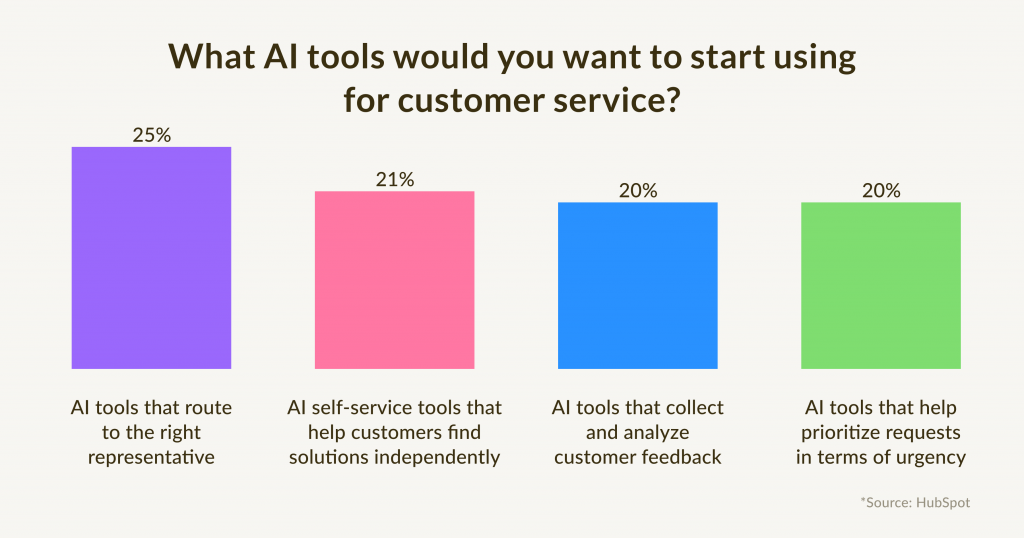
By 2024, a majority believe that people will use some form of AI or automation to assist them in their role, whether it’s software with AI/automation built-in to answer questions.
Uniquely, 49% of CS pros who already use it in their role think that AI/automation tools will be able to do most customer service-related tasks completely independently.
As mentioned above, Generative AI is the most effective automation tool used in customer service, and 84% believe it improves the customer experience. When it comes to personalization, 46% say it offers a more personalized experience. (Source: Hubspot’s study)

When we ask users how they feel about skipping the usual hiring steps like recruiting, interviewing, and lengthy staff training, and instead, having a smart AI Assistant like ChatGPT join their team, they usually react positively. This AI can quickly onboard, read your existing help center and support materials, and instantly provide responses to many customer questions.
As more and more users are interested in using AI Assistants, we’ve observed two real use cases from our customers that demonstrate their potential:
Use case 1: Boosting efficiency
Background: Online businesses sell various consumable products across various social media platforms, landing pages, and online stores.
Pain points:
- A vast product catalog of over 1000 products makes it challenging for staff to memorize details for each item.
- Managing numerous social and sales channels places huge demands on resources for effective customer support and engagement.
Purpose of AI Assistant usage:
- 24/7 Customer support: AI Assistant ensures round-the-clock customer care, including holidays and non-business hours. During peak sales seasons when the customer support team might be overloaded, AI Assistant handles multiple customer inquiries simultaneously without the need for additional hires.
- Internal support: AI Assistant will minimize inaccuracies when providing product information to both staff and customers. Staff can directly ask AI Assistant while interacting with customers without the need to manually navigate product lists or CRM systems.
- FAQs answers: AI Assistant answers frequently asked questions. It will save time and effort by handling initial product consultations, allowing the team to focus on more complex and personalized customer interactions.
- Omnichannel operation: AI Assistant will provide support across all business channels.
Use case 2: Timely support
Background: SaaS provider.
Pain Points:
- Handling complex technical cases takes a lot of time. Balancing these with other cases often results in longer waiting times for customers.
- Finding and training qualified staff with a deep understanding of the product and technical aspects is difficult. The training period alone takes at least two months, and even then, there may be errors.
- Customer support is only available during standard business hours, with no help on holidays or outside those hours. This leaves customers without assistance during these crucial times.
Purpose of AI Usage:
- FAQs automation: AI support takes charge of handling all FAQs, allowing employees to focus exclusively on complex cases.
- Efficient troubleshooting and resolution: With AI handling FAQs, employees can dedicate their expertise to resolving challenging, technical inquiries that require in-depth knowledge.
Concerns And Challenges With AI In Customer Service
Technical Complexity
Implementing generative AI requires technical expertise in machine learning and natural language processing. Businesses may need to hire additional staff or work with third-party vendors to implement this technology.
But with Chative, it’s easy. With our turn-key AI Assistant, you don’t have to go through the trouble of setting up or training an AI Assistant. Just a few clicks, and you can bring in an AI team member to assist with customer support and more. No need for technical skills – it’s user-friendly for any business.
Data Quality
Significant volumes of high-quality data are required for generative AI to produce reliable results. If the data used to train the AI is biased or complete, the AI may produce accurate or appropriate responses.
That’s where Knowledge Base comes in. AI Assistant will learn from your business knowledge base and bring up even more relevant content. It’s a game-changer that helps customers to find the information they need, reduces the response time, and ensures that the customer receives an accurate answer to their question even as the knowledge base keeps growing.
Lack of Human Oversight
While generative AI may automate many customer service replies, human monitoring is necessary to ensure the AI provides the correct answers. Without human supervision, the AI can provide inappropriate or rude replies.
Why not use an Automation Smart Workflow to triage complex problems that AI Assistant can’t handle and seamlessly pass them to your human support teams—so your customers get the best possible experience.
What’s Happened With Traditional Chatbots?
The arrival of ChatGPT is quickly changing this perspective among end users. The wave of hype has cut through with most people, and dramatically changed expectations around the performance of chatbots.
Is Generative AI The New Concept Of Chatbots?
The answer is NO. Although their basic function is communicating with humans. However, the main difference lies in how these systems process and generate responses. Traditional chatbots rely on fixed rules and scripted responses, while generative AI employs advanced algorithms and natural language understanding to provide more dynamic, context-aware, and human-like interactions.
This is precisely why Chative, a pioneer in the automation messaging industry with a seven-year of experience, is actively developing their AI Assistant to meet the evolving demands of the market. Chative recognizes that relying solely on traditional chatbots comes with limitations that hinder business scalability and customer satisfaction.
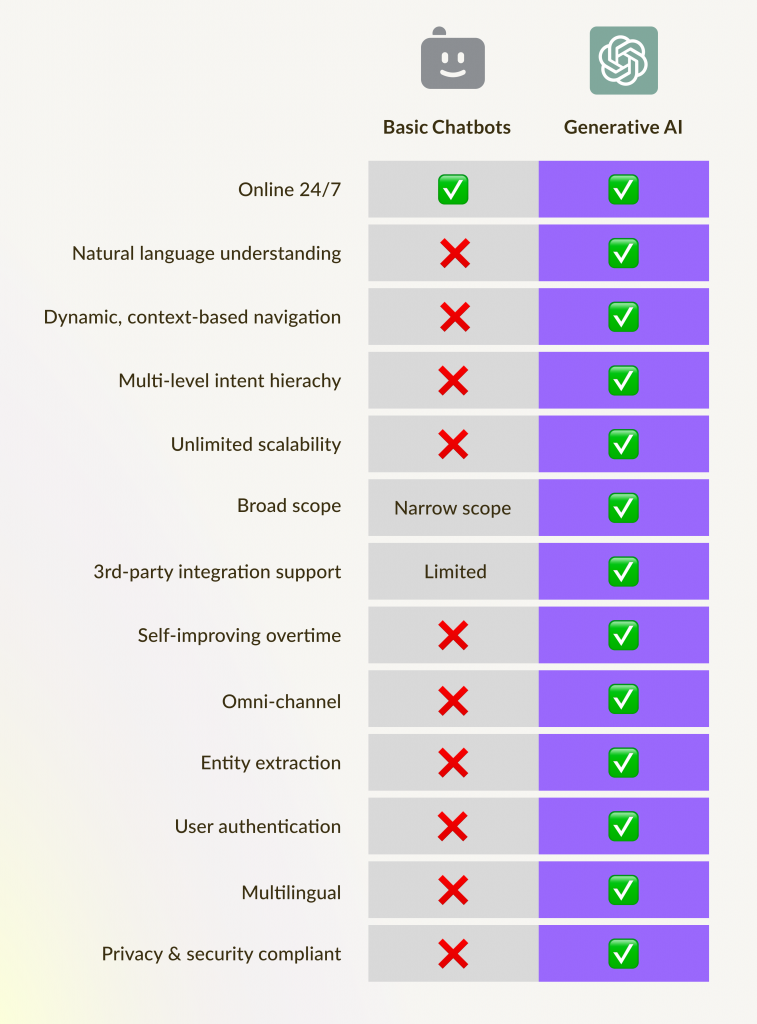
Why Chatbot Revolution In Customer Support Did Not Go Well?
Before we answer that, let’s rewind and revisit the chatbot trend of 5-6 years ago.
6 years ago, AI wasn’t as prevalent or powerful as it is today. During that era, people opted for visually designing chatbots, hoping to automate customer interactions.
All of their responses were carefully defined and scripted to ensure 100% accuracy in line with the business’s expectations. However, besides giving accurate and instant answers, they often left many customers feeling frustrated. Let’s explore the reasons why traditional chatbots are not popular anymore, despite their previous prominence as a customer service trend.
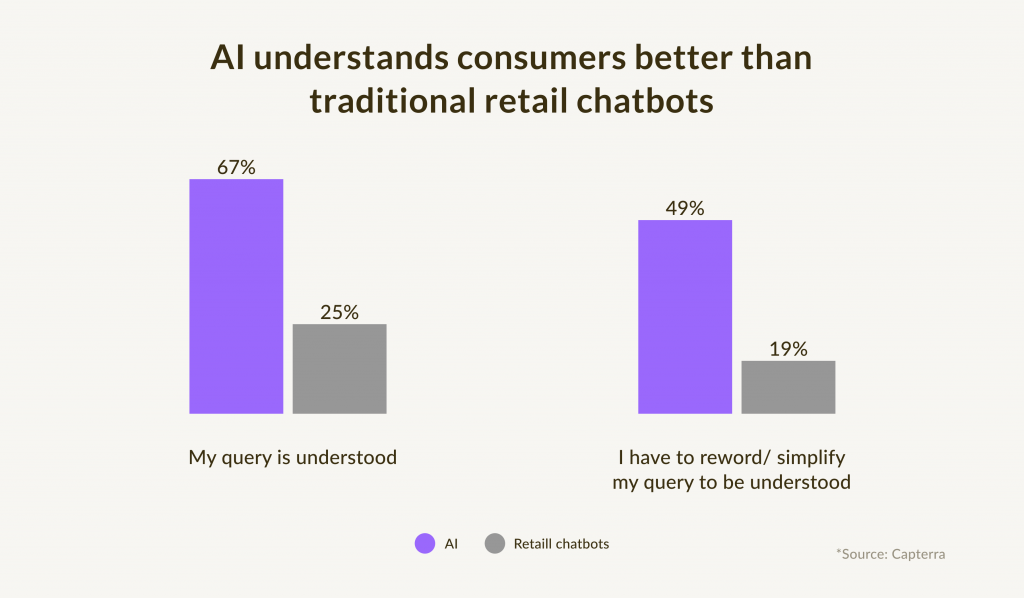
The Overexpectation Of People About The Abilities Of Chatbots
Throughout the history of chatbots, there’s been a misconception around the abilities of the bots. There’s a very high consumer expectation that a bot should be able to answer open-ended questions. However, this isn’t always the case and can be frustrating — as I’m sure many of you have experienced.
Looking at the customer service experience, there was a huge amount of complaints from most customers when they tried to communicate with chatbots — time-consuming, being put on hold etcetera. For e-commerce businesses, enhancing customer satisfaction is absolutely critical. Customers complained that they wasted their time because they had to explain their problems to the chatbot so many times. And when the chatbot couldn’t help, they had to repeat everything when they got transferred to a human. That made them feel unhappy when communicating with brands.
Was Chatbot A Successful Trend?
Not really. Chatbots were initially seen as a promising trend, widely adopted by companies seeking operational efficiency and quick response to customer inquiries. However, chatbots take away from the personal touch that’s important to building brand trust and often lack the sophistication and empathy of speaking with a real-life human. Despite their prevalence, customers continue to express a preference for engaging with real people when seeking assistance.
The trend eventually went down because the decline of rule-based chatbots can be attributed to their limitations in adaptability, natural interaction, and handling ambiguity, as well as the emergence of more advanced AI technologies that better align with evolving customer expectations.
Why Chatbots Can’t Keep Up With The AI Wave
The key problem with traditional chatbots was their poor UX. Chatbot designers tried to force the design of websites and forms into a conversation format. These chatbots followed a chronological structure with predefined inputs and outputs. Even when they attempted to mimic the back, next, and navigate buttons, it made customers feel like dealing with an outdated phone menu: press 1 for this, press 2 for that. It lacked the natural flow, reliability, interactions, and sympathy humans expect.
Chatbots can’t resolve complex customer inquiries
These early chatbots, built using visual bot builders, felt restricted, unnatural, and sometimes even rude. They offered responses through pre-defined options that forced customers down a linear path.
When customers’ queries deviate from existing conditions, the chatbot may respond with repetitive messages or redirect customers to a human agent.
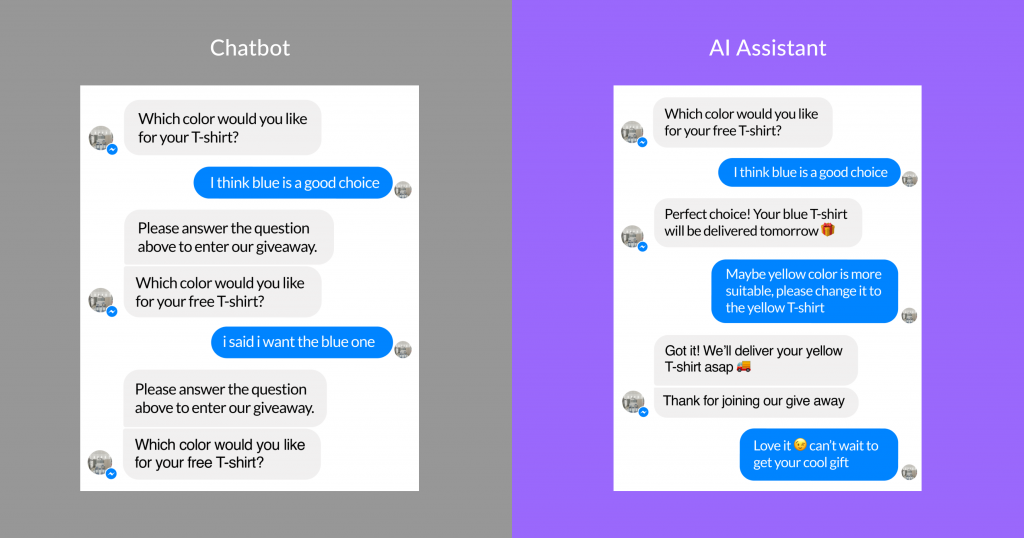
These interactions not only left customers dissatisfied but also deterred them from spending time exploring our business further.
Traditional chatbots may reduce the likelihood of customers returning in the future
This happens when chatbots fail to fully understand customer inquiries, leaving customers annoyed and feeling like their time is wasted. They would seek answers elsewhere, potentially exposing them to various alternatives and competitors.
It’s not just about that one chat, it could reduce the chances of customers returning for further engagement.
Not to mention, pre-designed chatbots, demand extensive efforts to set up and maintain
To maintain smooth conversations, numerous pre-set responses must be created. Every time there’s a sale or a discount event, for instance, you must review and make adjustments for each response. Even if the goal is flexible chatbot responses, these responses still require manual entry and adjustment.
This process consumes a significant amount of time and valuable resources.
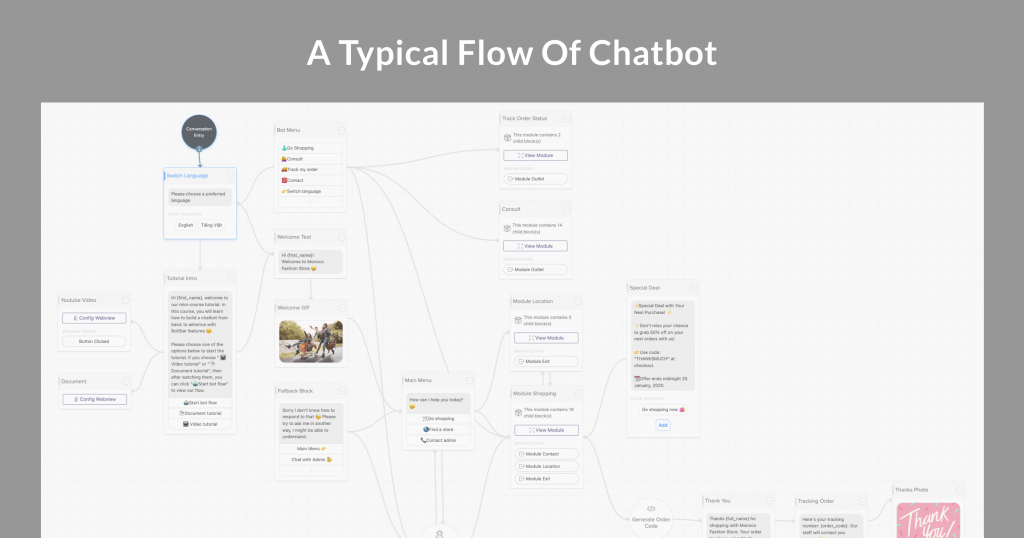
Before advanced language models like LLM and ChatGPT emerged, chatbot usage was relatively low. Considering the above pain points, it is understandable why many businesses hesitate to adopt chatbots fully.
How Does Chatbots Affect To E-commerce Businesses?
E-commerce retailers are eager to better address customer needs, from customer service, and order tracking to personalized recommendations. Capterra’s 2023 Retail Chatbots Survey of over 1,000 U.S. shoppers found that over half of them have negative experiences with chatbots, opening the door for Generative AI like ChatGPT integration.
As Gen Z continues to grow in influence, it is likely that the demand for immediate, conversational interactions, and personalization will only increase. E-commerce businesses need to start thinking about how to market to and sell to Gen Z now.
So, What Should Your Business Do?
While chatbots might seem like an appealing alternative to customer service team members, there’s a lot that you’re risking. So from now on, all you need to do is to find a better solution that can adapt perfectly to the present market situation. That’s why you need to implement Generative AI in your customer support process, and the solution is smart AI Assistant.
AI Assistant empowered by ChatGPT is no longer a nice to have; It is a necessity. In a cluttered and competitive marketplace right now, every brand is fighting for a slice of attention. To win the fastest-growing segment of consumers, we must embrace this transformation, addressing its challenges while harnessing its power to provide customers with outstanding experiences.
Balancing Human Support and AI
Although a large number of responders aim to fully automate customer service and sales processes, others express they do not want their customers to just interact with AI. They prefer that customers connect with AI first, giving them time to explore their brands, especially during non-business hours. Only when leads show true interest do humans step in to provide specialized support.
We do think about this balance. Businessmen need a well-designed space where people and AI work well together to do better. We’ll explore this further in the upcoming discussion.
The Promising Future of AI in E-commerce
Looking ahead, AI has a bright future. They will excel at tasks such as reminding customers to reorder previously purchased products and addressing abandoned carts, significantly boosting sales and customer loyalty.
Consumers are becoming more receptive to using generative AI for purchase decisions, expecting it to offer helpful recommendations [3]. Generative AI is expected to understand customer needs, provide accurate information, and efficiently resolve issues. Businesses seeking to provide exceptional customer service should promptly adopt and invest in generative AI.
But what if you don’t know where to start?
If you’re looking for a better alternative to a chatbot, Chative offers a hybrid option that combines AI and automation with personal support from a real-life human agent. The AI Assistant from Chative helps you scale up your customer support of your brand to answer your customer questions 24/7 across your various social media and platforms. Our AI Assistant was developed with high technology, which ensures that responses perfectly match your brand voice from day one.
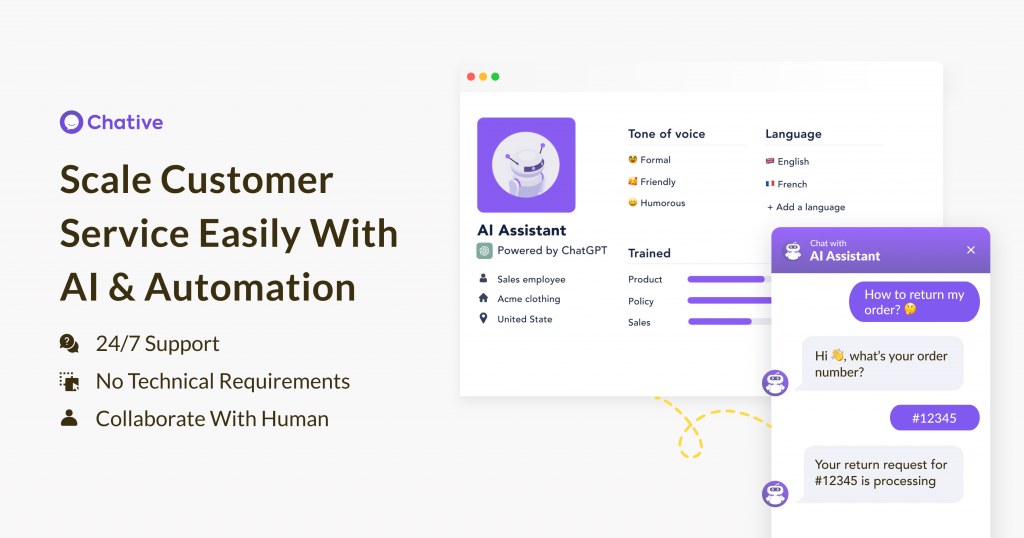
Rather than paying to install and maintain a bot to only deliver in a limited capacity, Chative AI Assistant gives your customers the personal support they deserve, at a fraction of the cost for you.
If you’re interested in scaling your customer care, reducing your response time, and increasing conversions, you can book a demo with our experienced advisory team. We will work with you to understand your business and your customers, and then we’ll recommend the best option that matches your goals and budget.
Conclusion
There is no clear victor in the ongoing contest between AI ChatGPT and conventional chatbots. Both strategies have advantages and disadvantages, making them appropriate in various circumstances. Traditional chatbots offer predictability and simplicity, whereas AI ChatGPT excels at dynamic conversations and understanding context. In order to provide customers with a well-rounded experience, AI and human interactions will probably coexist peacefully in the future.
